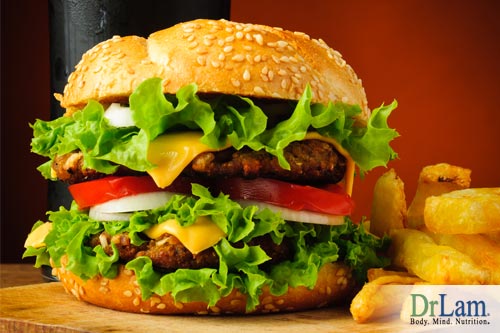 Burgers and fries, eggs and toast, turkey on rye… these are all American classics, but they are also a big factor in America’s epidemics of obesity and ill health. Not because of what is being eaten, as much as how they are being combined. Eating one of these classic meals frequently results in bloating, gas, dehydration, and fatigue. It’s not the foods themselves causing these symptoms, it’s the way they are put together. These combinations go against everything we know about how the digestive system works and about combining foods in a way that promotes healthy and effective digestion. The food combining diet is about pairing foods that compliment each other and offer the maximum health benefits.
Burgers and fries, eggs and toast, turkey on rye… these are all American classics, but they are also a big factor in America’s epidemics of obesity and ill health. Not because of what is being eaten, as much as how they are being combined. Eating one of these classic meals frequently results in bloating, gas, dehydration, and fatigue. It’s not the foods themselves causing these symptoms, it’s the way they are put together. These combinations go against everything we know about how the digestive system works and about combining foods in a way that promotes healthy and effective digestion. The food combining diet is about pairing foods that compliment each other and offer the maximum health benefits.
Conventional dietary wisdom tells us to simply eat less and exercise more. This is just one small part of the bigger picture of the overall foundation of good health and healthy weight management. The fact is, a proper Food Combining diet is even more important, as different combinations of food have different effects on what happens within the stomach during digestion, and this is the key to health and weight loss.
Generations ago, there were no desk jobs or convenience appliances. People were physically active, working very hard all day, returning home to devour meals of meats, breads, and cheeses. They were able to easily digest it all and had healthy gut flora – the beneficial bacteria found in the intestines that help you digest your food and absorb the nutrients.
Technological advances, including antibiotics, pasteurization and more intensive processing of foods, along with constant stress, have all worked together to destroy many of the nutrients in our food and caused significant damage to gut bacteria, making it more difficult for the body to absorb the nutrients that remain. Lower nutrient intake and absorption leads to deficiencies that can cause fatigue and increase the risk of disease. This makes it more important than ever to take special care of ourselves in order to counteract the effects of stress and undernourishment.
The good news is that eating for better health is a simple matter of knowing what foods to eat together, and what foods should be eaten separately, so that your digestive system is able to break your food down efficiently so that nutrients can be absorbed more effectively.
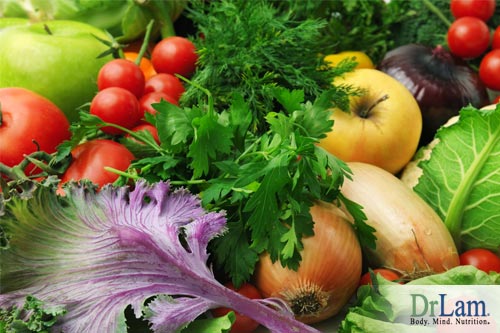 The Food Combining dieting is a well-kept secret that helps to enhance your digestion so that you gain maximum energy and nutrition from your food, helping you to feel healthier and more energized, and to achieve and maintain a healthy weight.
The Food Combining dieting is a well-kept secret that helps to enhance your digestion so that you gain maximum energy and nutrition from your food, helping you to feel healthier and more energized, and to achieve and maintain a healthy weight.
The process of digestion, especially when you’ve eaten a large meal, takes a surprising amount of energy. This is why you feel drowsy after a big meal: your body is being forced to divert so much energy from other processes to digestion, that there is little left for you to do anything else.
If your digestion is as poor as that of most Americans, undigested food is left to rot in your digestive tract. This creates an environment that increases the acidity of your blood and promotes the growth of yeast, parasites, viruses and even cancer cells, leaving you more susceptible to illness.
A good Food Combining diet means eating foods in combinations that facilitate the digestive process so that the food can be broken down and the nutrients absorbed and used for energy. Proper Food Combining diet planning isn’t all that complicated, if you follow these three main principles.
Fruits are among the most easily digested foods you can eat. Melons should always be eaten alone, on an empty stomach. Other fruits are best eaten alone, but can be eaten with other foods, provided they are eaten first. Otherwise, the fruit will sit in your stomach until other foods have been digested. By eating fruit first, it can be emptied from your stomach into your small intestines. If you are concerned about your blood sugar, eat some leafy greens after your fruit, as this will help keep your blood sugar stable.
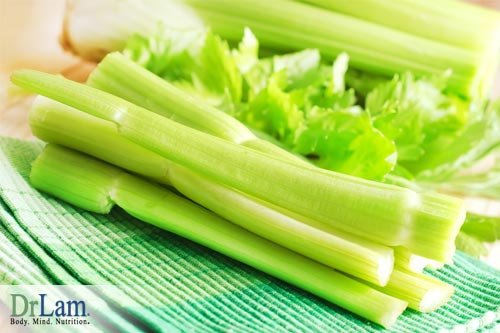 Foods that are high in protein, such as meat, fish, poultry and eggs, trigger your stomach to secrete hydrochloric acid and pepsin, increasing the acidity in your stomach to break down these foods. Starchy foods do not break down well in this type of environment. Wait at least three hours after eating a starchy meal to eat protein.
Foods that are high in protein, such as meat, fish, poultry and eggs, trigger your stomach to secrete hydrochloric acid and pepsin, increasing the acidity in your stomach to break down these foods. Starchy foods do not break down well in this type of environment. Wait at least three hours after eating a starchy meal to eat protein.
Good vegetables to eat with protein include leafy greens, cruciferous vegetables, carrots, celery, green beans, lettuce, onions, leeks, turnips, radish, zucchini, yellow squash, cucumber, beets and any kind of sprouts. Ocean vegetables include kelp, agar, nori, sea lettuce, dulse, and bladderwrack.
When you eat starches, your stomach releases an enzyme known as ptyalin, which creates an alkaline environment – just the opposite of that created by eating protein. Starchy vegetables include acorn squash, butternut squash, lima beans, corn, peas, potatoes, artichokes, and water chestnuts. Wait at least four hours after eating a protein meal before eating starches.
That all sounds simple, but what about everything else? What about nuts, dairy, fats, oils and anything not mentioned above? The above three principles are the core of the Food Combining diet. If you follow those, you’ll have a good start on a proper Food Combining diet. But there is a bit more to it. If you really want to follow a good Food Combining diet, here are a few more principles to keep in mind.
Opt for organic and unrefined oils as often as possible. Some of the best oils are flax seed, olive, pumpkin seed and coconut. Fats and oils can be combined with any foods, but should be used sparingly when consumed with protein as they will slow digestion. Use a small amount when cooking proteins and choose oil-free dressings.
These include foods like avocado, olives, seeds and nuts – but not peanuts, which are actually starchy legumes, or chestnuts, which are also a starch. Because they are high in protein, they are best paired with other proteins, as well as non-starchy and ocean vegetables.
On a side note, seeds and nuts are more easily digested if they are sprouted prior to eating. Sprouting seeds and nuts neutralizes phytic acid, a compound that blocks mineral absorption and inhibits the action of digestive enzymes.
Cheese, milk and other dairy foods are considered to be protein fats. They can be combined with protein, non-starchy vegetables, seeds, nuts (as above) and sour fruits. Of course, those who are lactose intolerant should avoid milk. Lactose is a sugar that can promote the growth of yeast and other microbes. It also contains casein, a protein with a structure very similar to that of gluten, and can trigger a reaction in those who react to gluten. In many people, milk can trigger an inflammatory response.
Raw milk is best, as pasteurization destroys the enzymes in milk that facilitate digestion. Drink raw milk on its own to keep it from interacting with other foods in the stomach.
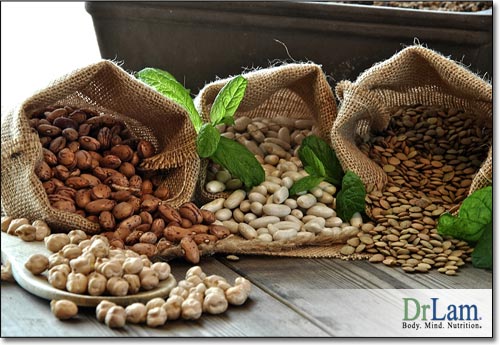 These foods are starchy, but also contain protein, so they can be difficult to digest and can cause gas and bloating. Like nuts and seeds, soybeans contain phytic acid and other digestive enzyme inhibitors that can block mineral absorption and make them difficult to digest. Soybeans also contain compounds that can block the production of thyroid hormones.
These foods are starchy, but also contain protein, so they can be difficult to digest and can cause gas and bloating. Like nuts and seeds, soybeans contain phytic acid and other digestive enzyme inhibitors that can block mineral absorption and make them difficult to digest. Soybeans also contain compounds that can block the production of thyroid hormones.
This isn’t to say that you should never eat soy. When soy is fermented, the phytic acid and enzyme inhibitors are neutralized and the proteins and other nutrients are more easily absorbed. Use caution when buying a new soy product, however, as much of the soy available is genetically modified.
Ideally, you should avoid refined sugar as much as possible. Refined sugar promotes yeast and other microbes and lowers your immune function. Try stevia or honey in a cup of tea or glass of lemon water to satisfy your sweet tooth. If you must eat sugar, eat it alone or add a bit to a cup of tea.
Fermented foods and drinks are jam-packed with nutrients and healthy bacteria that can help repopulate your gut, making them real superfoods. Enjoy these foods and drinks with anything, even fruit.
A cup of tea can aid digestion of any meal, but water and other beverages can dilute gastric juices and slow digestion. Drink plenty of water, just not with your meals.
This all sounds fine in theory, but what does it actually look like in practice? Here’s a sample of what a day on the Food Combining diet might look like:
If you find yourself in a situation where eating protein and starch together is unavoidable, try some legumes to help with digestion. Pea soup and bean salad can both help.
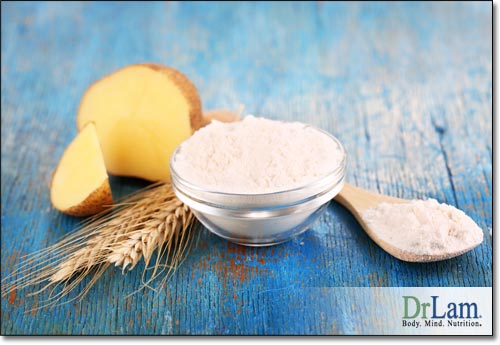 This all seems really complicated and overwhelming at first, but the longer you stick with it, the easier it becomes, and the more you notice the benefits that make it all worth it. You may find yourself craving a bun for your burger, or a baked potato with your steak, because that’s what you’ve grown accustomed to them. Start keeping a journal of what you eat and how it makes you feel. When you start to notice a pattern of feeling better when you keep your proteins and starches separate, those urges should begin to fade.
This all seems really complicated and overwhelming at first, but the longer you stick with it, the easier it becomes, and the more you notice the benefits that make it all worth it. You may find yourself craving a bun for your burger, or a baked potato with your steak, because that’s what you’ve grown accustomed to them. Start keeping a journal of what you eat and how it makes you feel. When you start to notice a pattern of feeling better when you keep your proteins and starches separate, those urges should begin to fade.
You may notice a difference in how you feel and how your clothes fit in just a few days. You may start to notice yourself feeling hungry more often. This is because your body and your digestive system are working more efficiently. It’s okay to eat a little more frequently, just choose smaller, simpler meals and snacks and keep following the principles, and you’ll find a routine that works for you.
You will probably also notice you have more energy and that your energy levels stay more consistent throughout the day. Use that extra energy for a bit of exercise every day, and you’ll feel better even faster.